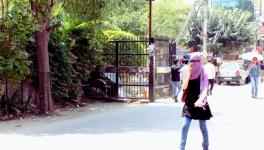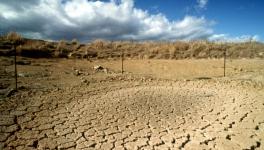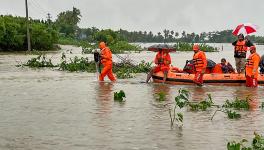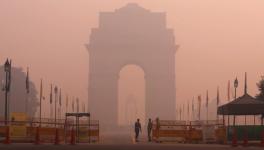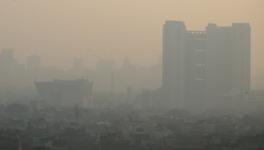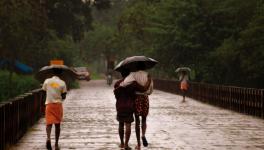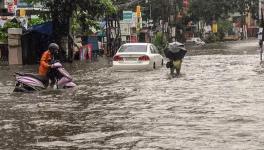Assam: Deficient Rain After Massive Floods add to Worries of Paddy Farmers
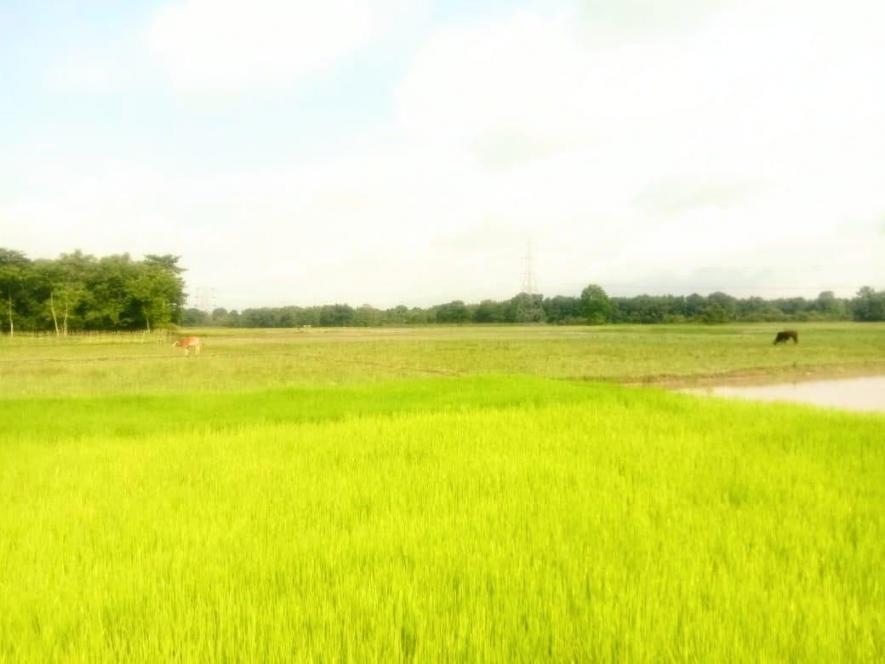
A Paddy field of Assam, with half remaining barren
“Bohag Matho Eti Ritu Nohoi
Nohoi Bohag Eti Maah
Axomiya Jatir Ee Aayush Rekha
Gono Jibonor Ee Xaah.”
These lines by Bhupen Hazarika indicate that ‘Bohag’ (the starting month of the year), for the people of Assam, especially the farmers, is not merely a month or a season; it is the lifeline and the courage of the people.
From seed germination to planting seedlings in fields and harvesting, paddy cultivation in Assam has traditionally depended on the state's unique weather pattern. The seed germination process begins in the month of Bohag (April) when the first spells of rain hit the ground, and the 'Kothiya' (the Paddy seedlings) become ready to be planted in the fields by the month of 'Sawan' (July-August).
Farmers here still depend primarily on the traditional ways of rice cultivation. For planting the seedlings, fields obligatorily need water. If it doesn't happen, the seedlings get destroyed, making the farmers wait for rain.
The planting process has a small window; if it gets prolonged, rice production is very likely to be severely impacted. This year, many of the flood-devastated fields are dried at the peak season of planting, and farmers can do nothing more than waiting for rain, which disrupts the process.
Additionally, Assam's farmers are facing a double whammy- first, the two spells of devastating floods during the pre-monsoon period and now deficient rains in several places. In some regions of the state, less than 10% of sowing has been completed till now; only a few days remain before the peak season gets over.
Ganesh Sarma lives at Pathsala of the Bajali district in the lower Assam division; he has few bighas of cultivable land, and only a minor portion of it could have been planted.
The secretary of the Bajali Anchalik Committee of CPI(M) (Communist Party of India (Marxist)), Sarma, explained the woes of the farmers of his area.
"The pre-monsoon flood this year caused historical damage in the Pathsala area. All of the seedlings grown were washed away by the flood water. Few farmers germinated rice seeds again, but as it was not in the proper season, they are dwarf and look malnourished. And now, farmers cannot plant the seedlings due to deficient rain. Some fields are cracked due to the mini drought-like situation right after the flood. Moreover, paddy fields are filled with silt and sands in some places and have become unusable. In my view, only 10% of the regular farming could have been done. Farmers worry about a shortage of production in our area."
Sarma also explained that rice farming time has advanced, with farmers preferring the high-yielding seeds over the traditional ones. He said that seeds like 'Ranjit' (a variety of rice developed by Assam Agriculture University) are germinated earlier, and the seedlings are to be planted preferably during June-end and mid-July.
"The deficient rain and scorching heat for about 20 days since July first week dried up the fields. Only a few days back, we received a few events of rain which is still not sufficient," Sarma said.
Moving further westward from Pathsala, Guruprasad Das, a farmer and social worker from Bhawanipur, spoke to NewsClick.
"One of the severely damaged areas of this year's flood, Medhikuchi, is just a few kilometers from my house. Farmers are distressed due to sand and silt deposition in the paddy fields. The same is the case in the Noyapara area. In these areas, 7-8 village panchayats' people witnessed the destruction of their seedlings, and they have nothing left. Their woes were further increased by the drought-like situation and the unusual heat. A few who had some seedlings left couldn't plant them. In my view, 25% to 30% of the households in our area could plant their seedlings."
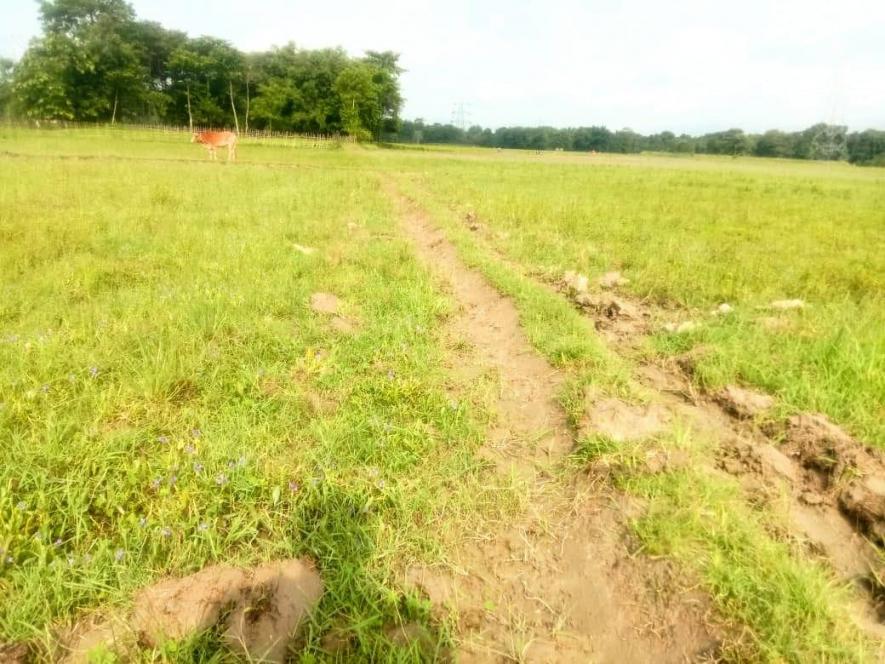
A paddy field in Bhawanipur, Bajali, Assam. Photo credit: Guruprasad Das
Das further commented on the moribund irrigation system.
“The Sorupeta irrigation project is nearly 30 years old, and today only 10% of the farmers can benefit from it. This year, the government agriculture department distributed seeds, and in Assam, seeds germinated much earlier. This is like a joke.”
Das further said, “A business is also going on. Some people are making money by selling the seedlings at as high as Rs 1,200 for 5 kg. In normal circumstances, even Rs 500 for 5 kg is a high rate."
It is worth remembering that the floods severely affected the lower Assam division (north bank of Brahmaputra) this year, which NewsClick reported earlier. It won’t be an exaggeration to say that not a single district of the lower Assam division was spared from ruinous floods.
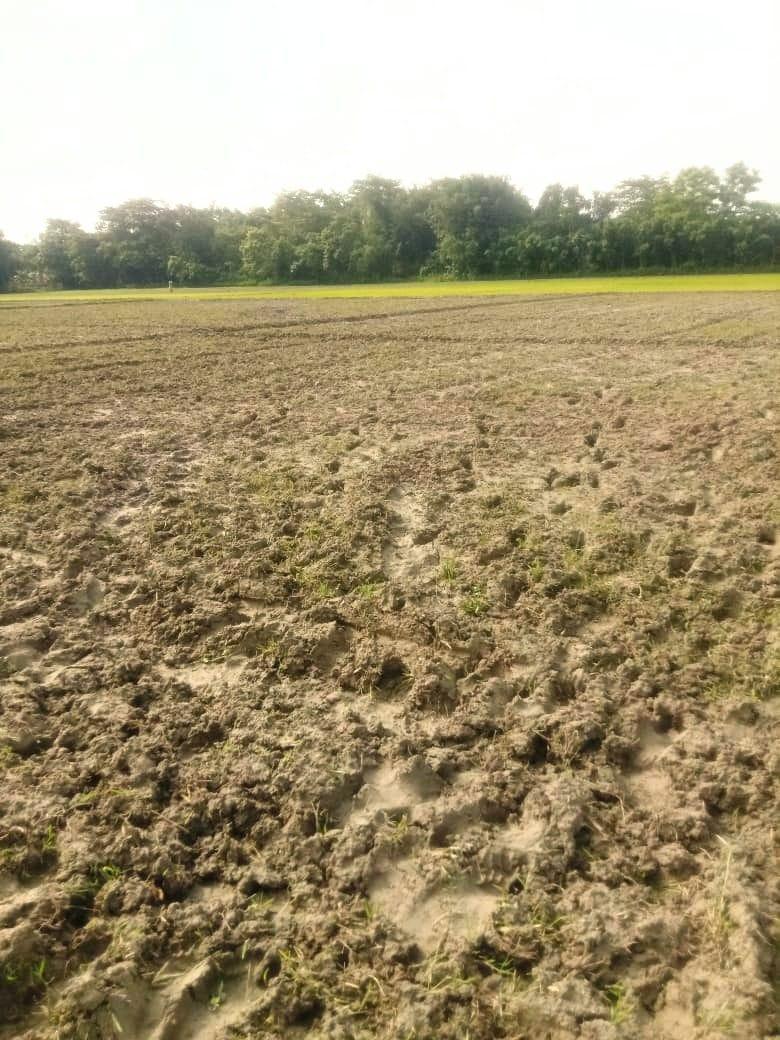
Another Paddy Field with no water.
In the Nalbari district, farmers are facing the same problem in several places.
Bonojit Hussain of Boridotora village said that the issue is particularly bad in paddy fields at a higher altitude.
"Due to sudden rain deficiency, they have almost dried up, and farmers cannot plant the seedlings. However, the low lands have water, and people have started planting there; these are where planting happens later, usually towards the end. Farmers have no choice but to plant in these lands to save their seedlings. But they are also worried about the rice productivity due to this."
"During the time of planting, the fields must be filled with water, and till the flowers come in, the soil should be moistened to get a good yield. Usually, there is a gap of about 20 days between the plantings in high and low lands. Still, this year everything has become erratic, first the flood and now the deficient rain," Bonojit Hussain said, adding, "Rains in last few days, however, have made the farmers hurry up to plant, and this has led to a labour shortage as well. In our village, some farmers are waiting for the 'Ruwoni' (the women who plant the seedlings) for as long as a week, which can be again a bad thing."
Iftikar Hussain of Borigaon village in the same district said that farmers are distressed due to rain shortages and poor irrigation facilities. Additionally, he also highlighted anomalies in fertiliser distribution.
"Fertilisers are in shortage, and their prices have shot up. Urea is sold in the wholesale market at a rate of Rs 257/bag (45 kg), while super phosphate is priced at Rs 580/bag( 50 kg), and the murate of potash is skyrocketing at a rate of Rs 1980/bag (50 kg). Murate of potash cost Rs 950/bag till last year. Under the guise of the Ukraine-Russia war, the distributors may have hoarded this fertiliser and are selling at higher rates during the peak season," Iftikar Hussain alleged.
Moreover, to procure fertilisers from the wholesale market, one needs to submit an Aadhar card, said Bonojit Hussain, with each card getting only one bag.
"This year, in addition to the Aadhar card, the biometric system has been installed everywhere. For high-yielding seeds, 17 kg of urea, 19 kg of superphosphate, and 6 kg of murate of potash are required per bigha of land. How can this system ease the farmers?" Bonojit Hussain questioned.
Raha and Kampur areas in the Nagaon district are among the worst-affected areas during the recent floods. Rain shortage has also emerged as an issue now. But, the real trouble is the lack of seedlings. The few farmers who are left with seedlings cannot plant them—the high lands are dried, and the low lands are still flooded with other plots having heaves of silt and sand deposition after the flood.
Molan Laskar of Kampur said, "In areas between Kampur and Chaparmukh and between Kampur and Baithalngso, paddy fields are likely to remain barren this year. The circle officer of Kampur told us that 8320 hectares of cultivable lands were submerged in the floods. And our survey says that only 3% of this land, near some villages, will be farmed this year. The remaining land is likely to remain barren this year," Laskar told NewsClick. He also said that the state government has done nothing to help the farmers.
From Nagaon, the next district of Golaghat is also facing a severe crisis.
Soneswar Narah, Jeepal Krishak Shramik Sangha's chief advisor, told NewsClick that almost all of the district's Sorupathar assembly constituency is facing a crisis of rain deficiency.
"Farmers are not able to plant the seedlings, and the government has shown no willingness to improve the irrigation system. Sorupathar, Golaghat, Khumtai, and Dergaon areas are the ones where farmers are worried as the peak season is about to get over, and their seedlings cannot be planted. This year, there will be a production shortage in our area," Narah said, highlighting the apparent apathy of agencies towards the burning issues of farmers.
The IMD (Indian Meteorological Department) data also shows the trend of deficient rain in Assam. It says that from July 21-27, Assam had a deficient rainfall of 14% (see the table below).
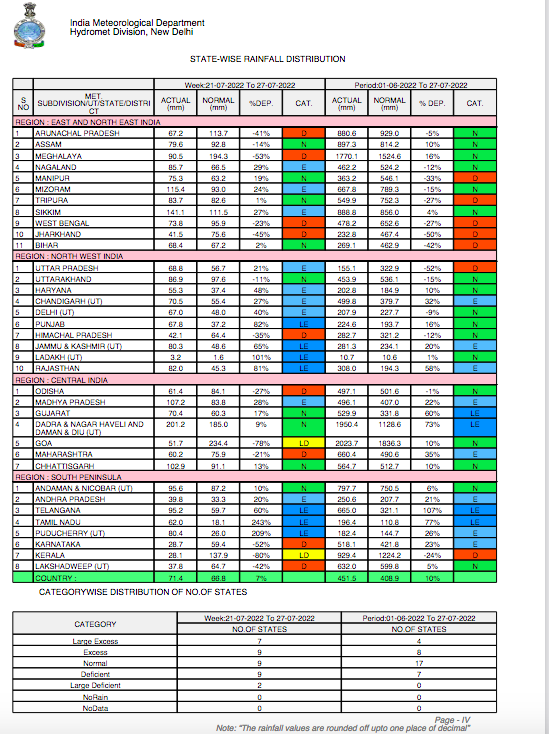
State-wise rainfall data from July 21-27. Source: IMD.
Even a week earlier, from July 14-20, the state saw a rain deficiency of as high as 50%, as depicted in the figure below.
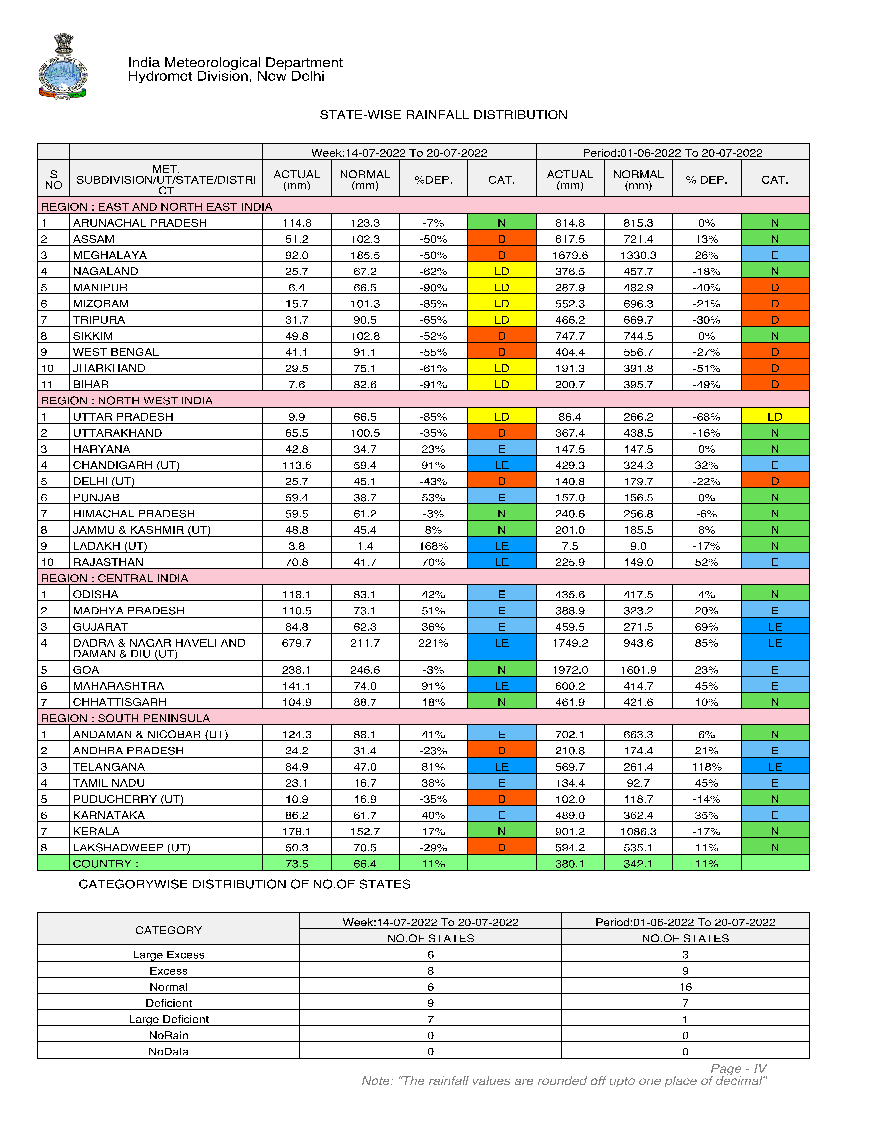
State-wise rainfall data from July 14-20. Source: IMD.
The district-wise rainfall data of IMD also shows that several districts in Assam have seen deficient rains in the last week. In fact, starting from July, rains became scarce all over Assam.
Rakesh Chakravarty, secretary of Assam Youth Congress, from Goalpara district of South West Assam, also shared similar experiences faced by farmers.
“Dalgoma, Matia, Sidhabari, Dohela, Rongsai, Baida, and Dahaikata are some villages where I travelled and talked to farmers to know their problems. Water shortage is creating heavy problems for the farmers, and due to a lack of irrigation system, they have to solely depend on rain, which is behaving erratically this year. Moreover, a new problem has arisen in Goalpara of increased human and elephant conflict. The wild elephants will destroy the paddy fields, and there have already been 3-4 deaths in the district.”
It is clear from the farmers' stories, the experience of residents and the IMD data that rice production may suffer this time, adding woes to the already distressed people in the floods.
Those at the receiving end are the rural poor.
“Even after 74 years of independence, farmers here depend solely on rain. Only 10% or so farmers are getting the benefits of irrigation in the state. Independence of the farmers from their sufferings and distress will be the real celebration of independence,” commented Balindra Saikia, the state convener of Krishak Mahasabha.
Get the latest reports & analysis with people's perspective on Protests, movements & deep analytical videos, discussions of the current affairs in your Telegram app. Subscribe to NewsClick's Telegram channel & get Real-Time updates on stories, as they get published on our website.










